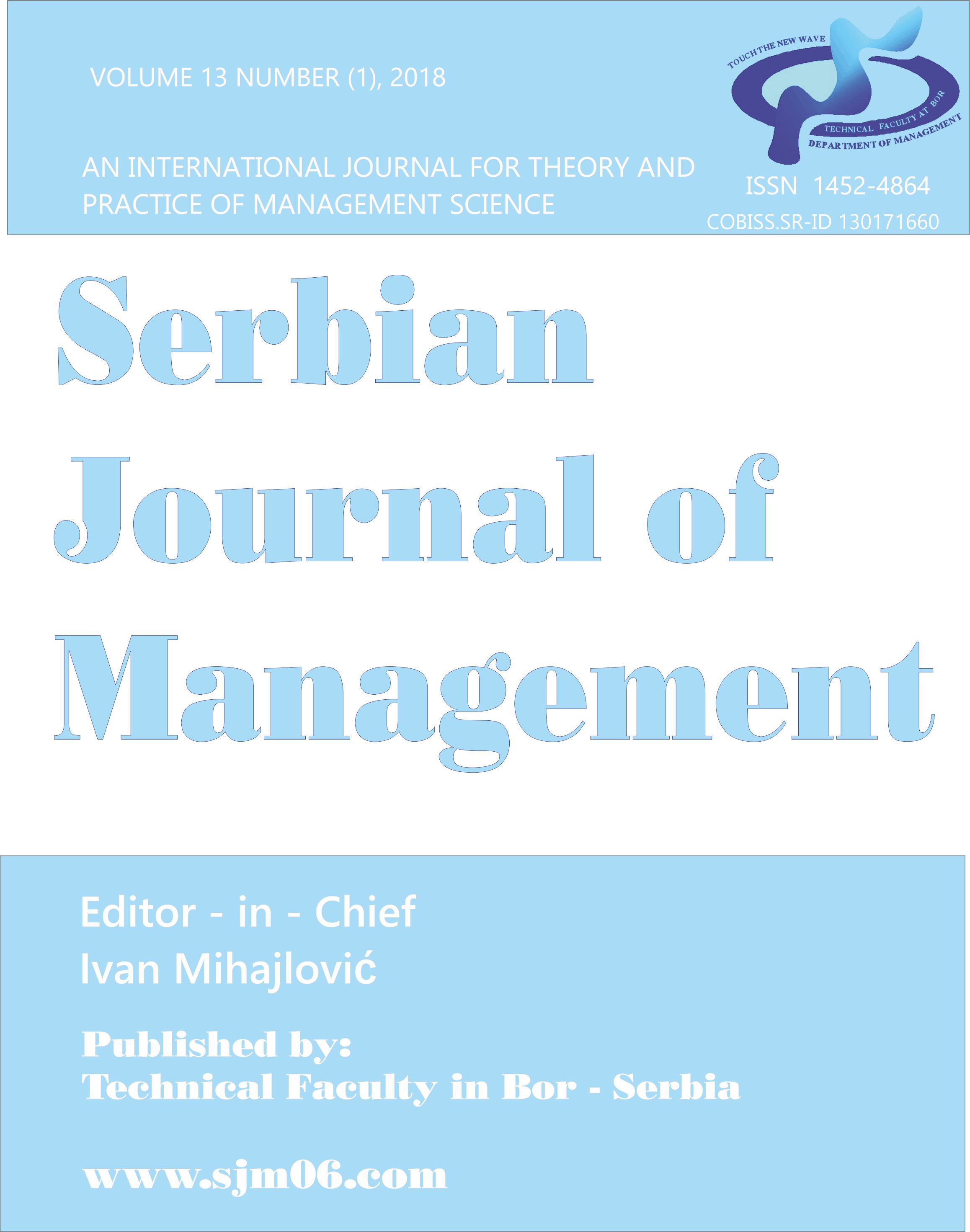Leadership and entrepreneurship: a case of Redhill Herbals Pvt. Ltd.
Abstract
This research work seeks to investigate the issues that inspire an entrepreneur to be successful in his entrepreneurial journey. Mediating role of influence and vision are viewed as inevitable resources for strategic entrepreneurship. The paper sheds lights on the leadership style and analyses the issues related to influence, motivate, restructuring, and contribute to the field's growing body of work. The research study employs a case study method. The interviewees were interviewed by theme questions and secondary information was gathered to strengthen the empirical section. The findings demonstrate that a successful organisation comes in existence not only because of the efforts put in by self-motivated individual who is ready to undertake responsibility of leading and taking risks. This necessitates distinctive quality on the part of an entrepreneur who is always cognizant of the new developments and vagaries surrounding him and does not hesitate to adapt to those changes. The case presents an opportunity for burgeoning entrepreneurs and would-be managers to comprehend how leadership style and entrepreneurial context guarantee entrepreneurial success.
References
Baldoni, J. (2005). Motivation Secrets: Great Motivation Secrets of Great Leaders. Online Edition, Available on http://govleaders.org/motivation_secrets.htm
Cacioppe, R. (1998). An integrated model and approach for the design of effective leadership development programs. Leadership and Organization Development Journal, 19 (1), 44-53.
Churchill, G.A. (1999). Marketing Research: Methodological foundations. Seventh Edition. Fort Worth: Dryden Press, USA.
Clark, A.E., & Oswald, A.J. (1994). Unhappiness and unemployment. Economic Journal, 104, 648-659.
Eckhardt, J.T., & Shane, S.A. (2003). Opportunities and entrepreneurship. Journal of Management, 29, 333-349.
Fiet, J.O. (2001). The pedagogical side of entrepreneurship theory. Journal of Business Venturing, 16, 101-117.
Fiedler, F.E. (1967). A Theory of Leadership Effectiveness. New York: McGraw-Hill.
Finkle, T.A., Kuratko, D.F., & Goldsby, M.G. (2006). An examination of entrepreneurship centers in the United States: A national survey. Journal of Small Business Management, 44, 184-206.
Furnham, A. (2002). Managers as change agents. Journal of Change Management, 3 (1), 21-29.
Hennessey, J.T. (1998). Reinventing Government: Does Leadership Make the Difference?. Public Administration Review, 58 (6), 522–532.
Hersey, P., Blanchard, K., & Johnson, D.E. (2001). Management of Organizational Behavior, 8th ed., Prentice Hall, Englewood Cliffs, NJ, USA.
House, R.J. (1977). A 1976 theory of charismatic leadership. In: J.G. Hunt & L.L. Larsons (eds.) Leadership: The Cutting Edge. Carbondale, IL: Southern Illinois University Press, 189-207.
Howell, J.M., & Avolio, B.J. (1993). Transformational leadership, transactional leadership, locus of control, and support for innovations: key predictors of consolidated-business-unit performance. Journal of Applied Psychology, 78 (6), 891– 903.
Katz, D., & Kahn, R.L. (1978). The Social Psychology of Organizations, 2nd ed., John Wiley and Sons, New York, NY.
Kumar, N., Stern, L.W., & Anderson, J.C. (1993). Conducting inter-organizational research using key informants. Academy of Management Journal, 36 (6), 1633-1651.
Leitch, C.M., McMullan, C., & Harrison, R.T. (2013). The Development of Entrepreneurial Leadership: The Role of Human, Social and Institutional Capital. British Journal of Management, 24, 347–366.
Singh, H., & Aggarwal, N. (2012). Tupperware: achieving sustainable development goals through elevating socio-economic status of women in India. International Journal of Business Performance Management, 13 (1), 18-27.
Singh, H. & Aggarwal, N. (2013). Achieving sustainable development goals through elevating socio‐economic status, Competitiveness Review. An International Business Journal, 23 (4/5), 398-407.
Stogdill, R.M. (1998). Personal Factors Associated with Leadership. Journal of Psychology, 25, 35–71.
Van Knippenberg, B., van Knippenberg, D., De Cremer, D., & Hogg, M.A. (2005). Research in leadership, self, and identify: A sample of the present and a glimpse of the future. The Leadership Quarterly, 16, 495- 499.
The Author wishes to submit the Work to SJM for publication. To enable SJM to publish the Work and to give effect to the parties’ intention set forth herein, they have agreed to cede the first right to publication and republication in the SJM Journal.
Cession
The Author hereby cedes to SJM, who accepts the cession, to the copyright in and to the paper.
The purpose of the cession is to enable SJM to publish the Work, as first publisher world-wide, and for republication in the SJM Journal, and to grant the right to others to publish the Work world-wide, for so long as such copyright subsists;
SJM shall be entitled to edit the work before publication, as it deems fit, subject to the Authors approval
The Author warrants to SJM that:
- the Author is the owner of the copyright in the Work, whether as author or as reassigned from the Author’s employee and that the Author is entitled to cede the copyright to SJM;
- the paper (or any of its part) is not submitted or accepted for publication in any other Journal;
- the Work is an original work created by the Author;
- the Author has not transferred, ceded, or assigned the copyright, or any part thereof, to any third party; or granted any third party a licence or other right to the copyright, which may affect or detract from the rights granted to SJM in terms of this agreement.
The Author hereby indemnifies the SJM as a body and its individual members, to the fullest extent permitted in law, against all or any claims which may arise consequent to the warranties set forth.
No monetary consideration shall be payable by SJM to the Author for the cession, but SJM shall clearly identify the Author as having produced the Work and ensure that due recognition is given to the Author in any publication of the Work.
Should SJM, in its sole discretion, elect not to publish the Work within 1 year after the date of this agreement, the cession shall lapse and be of no further effect. In such event the copyright shall revert to the Author and SJM shall not publish the Work, or any part thereof, without the Author’s prior written consent.

